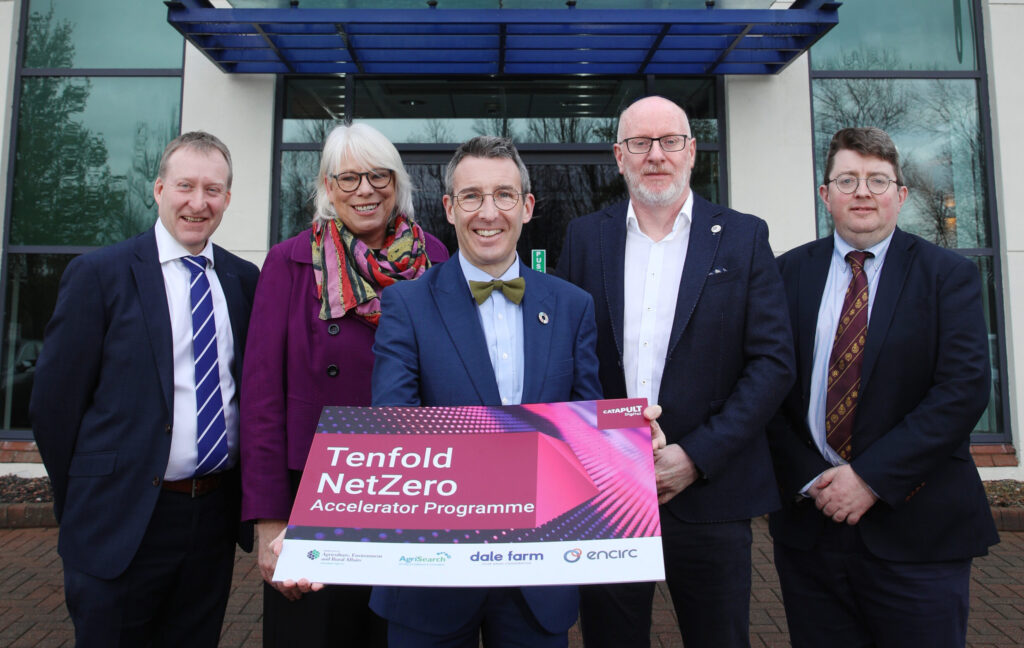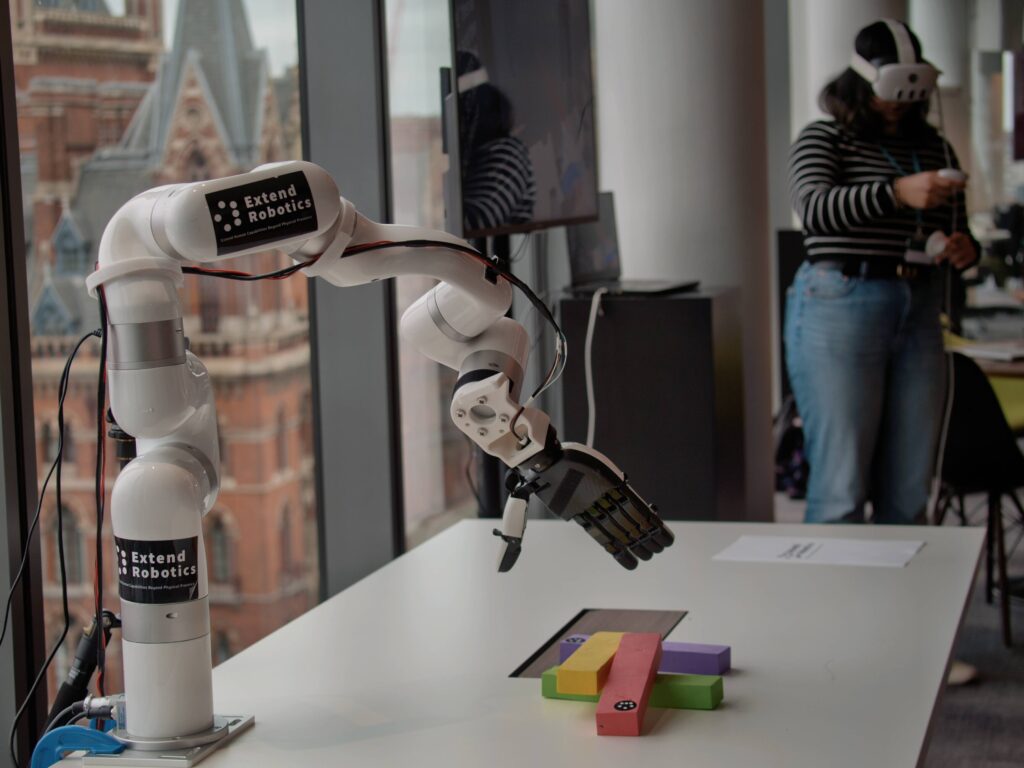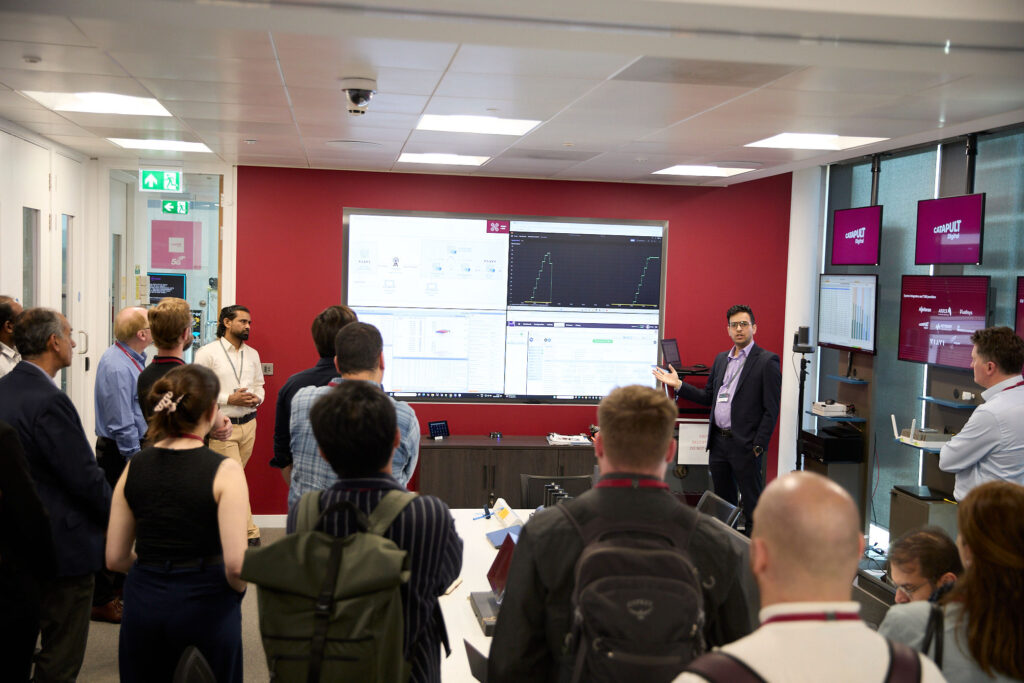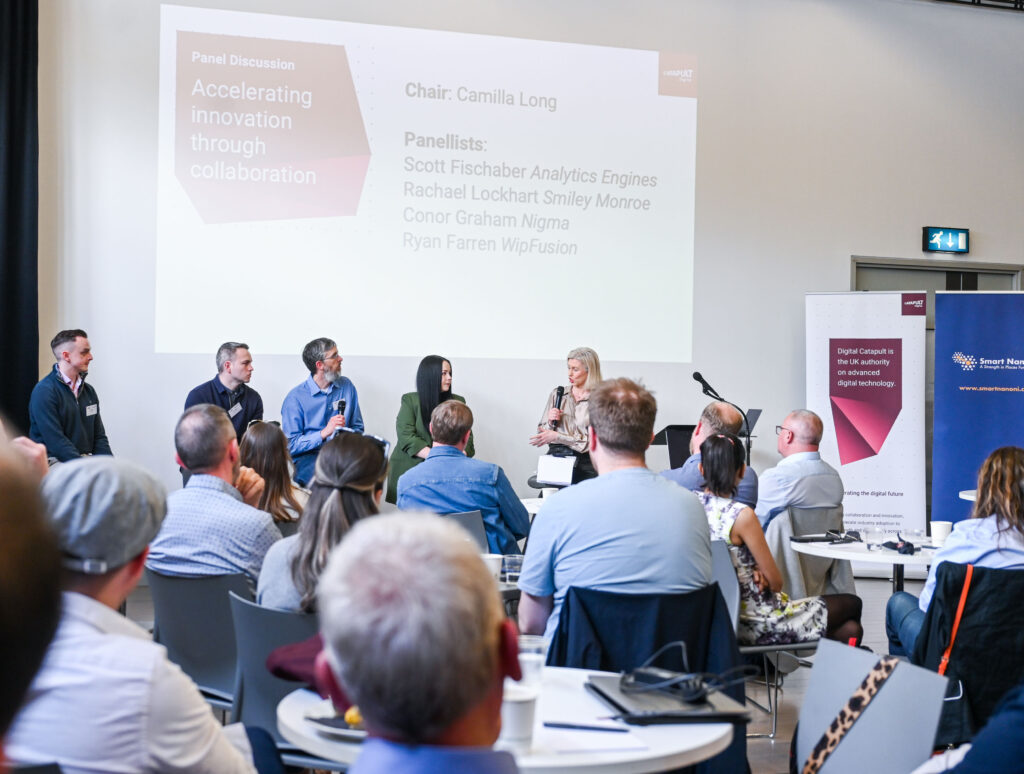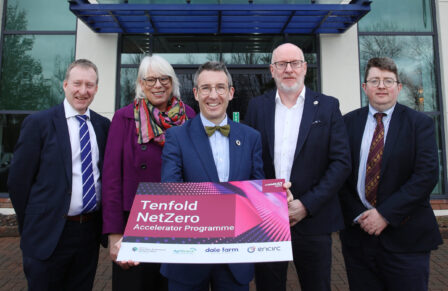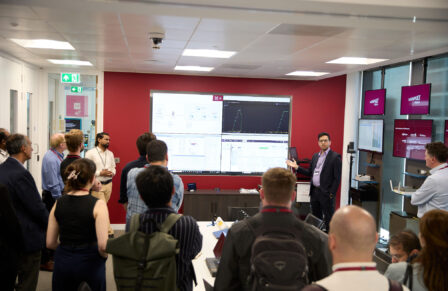Digital Catapult’s world-class capabilities in testing, validating and integrating Open RAN technologies have recently been recognised by the ORAN Alliance, where Digital Catapult was recognised as the UK’s first and only Open Testing and Integration Centre (OTIC) status, highlighting our role as an independent convenor of advanced connectivity capabilities. The recognition also highlighted the strategic value Digital Catapult brings in accelerating Open RAN innovation in the UK, with the PlugFest initiative playing a key role.
We drive the development and deployment of data-driven and open future networks in the UK and recently hosted the Spring 2025 PlugFest, supporting the O-RAN Alliance’s mission to drive open, interoperable, and intelligent RAN systems. A plugfest is an event where companies test the interoperability of their solutions by physically connecting them to each other, offering a hands-on way to identify and resolve compatibility issues related to specific technical standards. This ensures devices work well together in real-world scenarios, enabling deep tech solutions to be applied practically to industry.
This year’s Plugfest enabled broader participation and wider regional representation – with nineteen global labs in eight different venues and sixty-nine participating organisations – and real-time knowledge-sharing, strengthening collaboration between partners and peers. This Plugfest also served as a cornerstone for validating and maturing key O-RAN specifications through practical hands-on testing and deep collaboration in a real-world, independent environment.
Key highlights of Spring 25 PlugFest
One of the main highlights of the initiative was Digital Catapult supporting six diverse vendors from the UK, Europe, North America and Asia. Our support included assisting vendors with a range of applications including those that specialise in testing and measurement such as Keysight and Viavi, as well as Open RAN vendors such as VVDN, Capgemini, Calnex and Xelera.
Hosted by Digital Catapult’s Open Networks Lab in London and Viavi’s Lab in Stevenage, the Plugfest considered three major testing themes:
- Energy efficiency and consumption monitoring
- Open RAN security
- End-to-end functional and performance
Energy Efficiency and Consumption Monitoring
Improving the energy efficiency of Open RAN is a goal for many mobile network operators given that RAN accounts for about 60% of the total power consumption of a complete mobile network. Driving industrial decarbonisation also underpins Digital Catapult’s market interventions, and so as a host of Spring 2025 Plugfest, we enabled participating companies to demonstrate energy efficient hardware and software solutions on real components of Open RAN including O-CUs (Central Units) and O-DUs (Distributed Units). These are Open RAN components that were tested while hosted on Commercial-off-the-Shelf (COTS) servers based on two different platforms, x86 and ARM, leveraging the Keysight Energy Efficiency platform.
Different test cases were performed to monitor the power consumption, system stability and the relation between traffic and the power consumption for:
- varying loads (low, medium and high)
- varying durations (up to three minutes and up to three hours), and
- with/without accelerator cards
The energy efficiency test results on the ARM server were particularly promising, demonstrating much lower power consumption, with a saving in energy efficiency of 70%, for the O-DU compared with the other platform. These results allowed the PlugFest participants to not only see the performance of their Open RAN products, but to also benchmark these products in terms of energy efficiency; a critical KPI for operators and an important step in preparing solutions for broader commercialisation.
Open RAN Security
Open RAN Security validation was another key testing scenario with the real O-CU/O-DU used as a system under examination to ensure that O-RAN solutions meet both operational resilience and efficiency benchmarks. The testing and validation of security is a key determinant of success for vendors, as a growing number of industry partners and prospective customers demand additional security requirements from advanced connectivity solutions in the face of mounting cybersecurity threats.
There were two new elements added to this Plugfest that were not part of previous Plugfests hosted by Digital Catapult:
- Complete testing of all security test cases in automation mode, and
- Deployment of two new real O-RUs (Radio Units)
The set of 5G security test cases within this theme were defined by 3GPP in SCAS (SeCurity Assurance Specification) for specific network functions or groups of network functions. The testing of these SCAS security test cases showed how Open RAN elements could withstand security threats, showing real promise for real-world deployment and industrial application.
End-to-End Open RAN Functional and Performance
The focus on end-to-end Open RAN functionality and performance enabled the participating companies to showcase and perform the tests on an end-to-end level ensuring the Open RAN solutions can meet the demands of industry and partners. This end-to-end system-level testing involved real O-CU/O-DU units and two real O-RUs. The O-CU and O-DU are key components of the 5G RAN architecture responsible for processing and managing radio signals and traffic. The O-RUs handle the radio frequency transmission and the reception over the air.
While these key components were real products to be tested, all other elements, such as the 5G Core, user equipment, and traffic generators, were emulated products required to support the testing of the real products. The testing focused on both functional and performance aspects, specifically measuring fronthaul latency, downlink throughput (i.e., traffic successfully delivered to the destination), and the impact of simulated delay impairments. In addition, new test cases for handover and mobility on an O-DU level with multiple RUs were performed for the first time during this Plugfest.
Testing the functions and performance of the Open RAN under the managed emulated delays, showed the system capability and operation under different delay profiles. The results of which could help operators to plan and monitor their networks more efficiently and in a timely manner in the future, meeting demand from peers, customers and mobile network providers.
What did we learn from this PlugFest?
This Plugfest proved that the Open RAN system setup remains a complex task, particularly when integrated with new Open RAN products that have not been integrated or tested before. We also learned that different platforms, i.e. x86 and ARM, have different energy consumption performances, and this was very visible in particular when hosting the O-DU application, one of the most power-hungry Open RAN components, which is a key consideration for businesses that are looking to enhance energy efficiency and decarbonise their operations.
This requires additional study and exploration to identify the main factors that led to these outputs and results, to further inform forthcoming interventions, to develop and deploy data-driven and open future networks and to drive the practical application of this deep tech innovation in industry.
What’s next
As the industry moves closer to a large-scale Open RAN deployment, the Spring 2025 Plugfest reaffirmed the importance of shared testing, rapid feedback cycles, and transparent collaboration. These Plugfests not only strengthen product readiness but also demonstrate the collective commitment to openness, flexibility, and innovation in RAN architecture.
We plan and expect to have more test scenarios and test cases in the future Plugfests, specifically focusing on the following testing enhancements:
- Further expand to include consistent and repeatable testing cross international labs and regions.
- Extend the energy efficiency testing to include additional loads with the hardware acceleration.
- Extend the mobility and handover testing from intra-DU only to multiple gNBs.
- Extend the energy efficiency testing from monitoring to monitoring and optimisation.
- Further increase the number of profiles for different delay impairment parameters.
- Perform all the tests in automation mode.
- Further extend and explore the energy efficiency testing onto the ARM servers, in addition to x86 servers.
If you’re interested in learning more about Digital Catapult’s future connectivity work, learn more here.






























